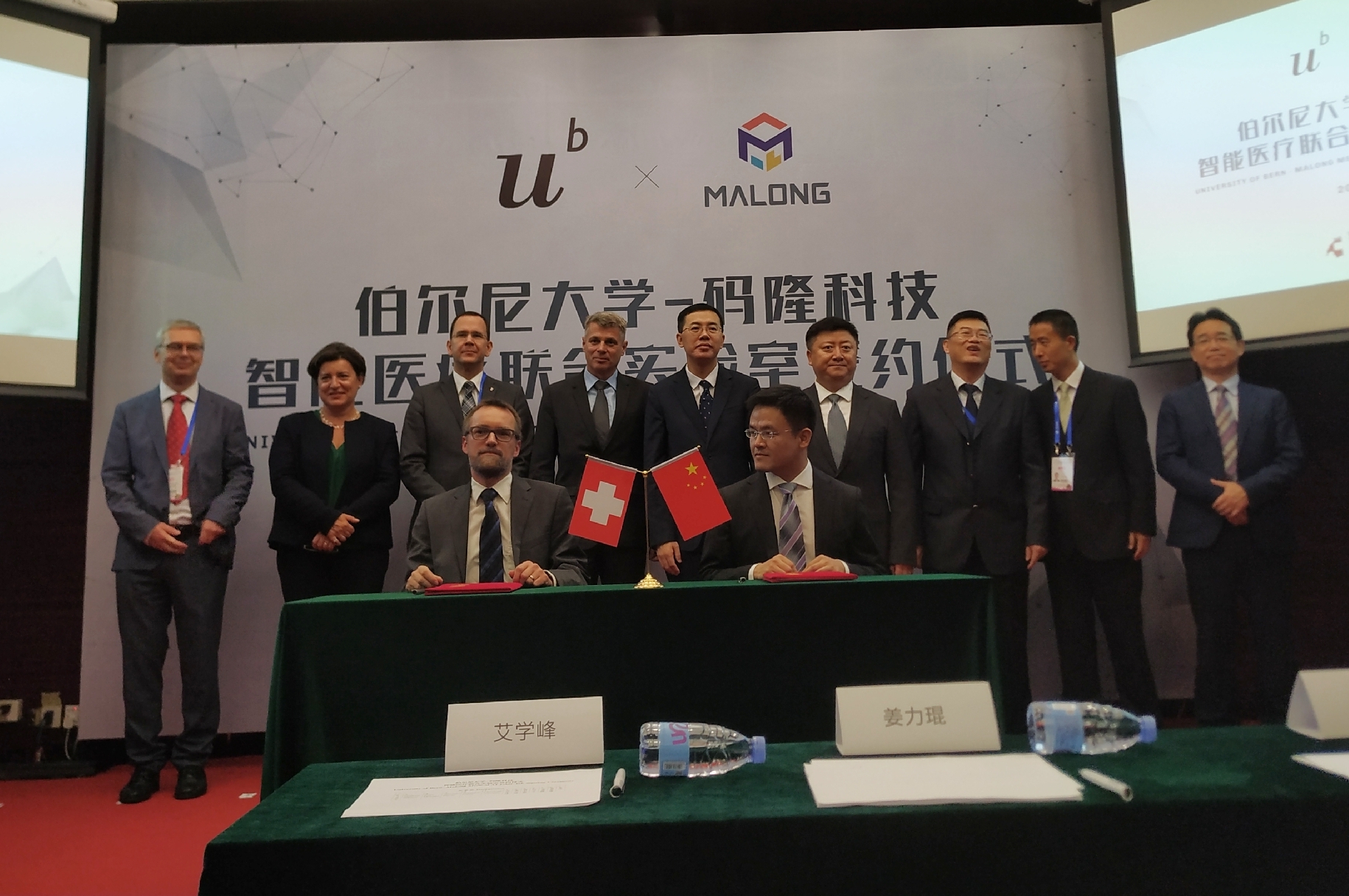Swiss university, SZ company join forces

Shenzhen-based Malong Technologies and the University of Bern announced Friday at the 20th China Hi-Tech Fair the creation of a joint laboratory dedicated to applying artificial intelligence to finding solutions for a wide range of neurological diseases.
The University of Bern-Malong Technologies Medical AI Joint Laboratory will be set up in Shenzhen, and Bern, Switzerland. Malong Technologies, one of the world’s leaders in computer vision and image recognition, and the University of Bern, one of the world’s top brain research institutions, will each assign scientists and researchers to combined teams focused on integrating AI with biomedical engineering and basic research to dramatically improve brain disease prediction, diagnosis and prognosis, and to develop new cures.
The joint lab is working on a system that can diagnose a stroke in just 1.7 seconds following automatic analysis of brain CT images, which will greatly help doctors improve diagnostic efficiency, which normally takes five minutes.
Stroke is the leading cause of death in China, accounting for 22.45 percent of the total, according to Huang Weilin, chief scientist at Malong Technologies. After a stroke has occurred, 1.9 million cells die per minute, and irreversible brain tissue damage occurs after three hours. “Even a single second may be enough to help patients before it is too late,” said Huang.
“It is a privilege and an honor to work with Malong to develop state-of-the-art AI technologies for neuroimaging applications, said Mauricio Reyes, head of the Medical Image Analysis group at the Institute for Surgical Technology and Biomechanics at the University of Bern, adding that Shenzhen and Bern established a sister-city relationship in 2015. “The synergies we have identified and the interdisciplinary team we want to set up have remarkable potential.”
“With this new joint lab, we take a major step toward realizing our dream of bringing AI’s benefits to everyone,” said Dr. Dinglong Huang, co-founder and chief executive officer of Malong Technologies. “We are honored to partner with the University of Bern to help fulfill the promise of AI for the field of medicine.”